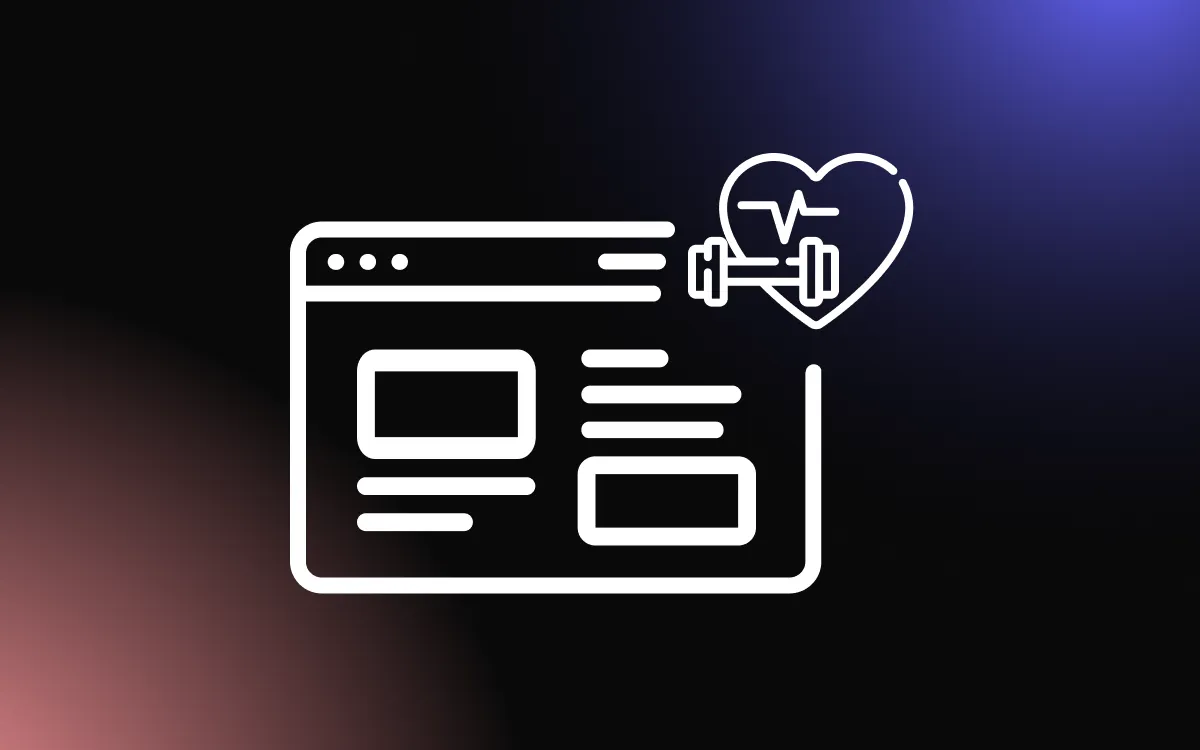
Navigating the web is akin to sailing the vast ocean; the journey should be smooth and the destination, clear. As our digital world becomes increasingly complex, the necessity of effective website navigation has surged to the forefront of the web design conversation.
This comprehensive guide promises to peel back the layers of good navigation, diving into the psychology of web users, technological considerations, and essential design elements that can turn a visit to your website from a tedious treasure hunt into a seamless experience.
Stay with us, as we chart the course for creating digital spaces that not only attract but also intuitively guide your audience.
Understanding User Behavior

Before diving into the specifics of website navigation, it’s crucial to understand user behavior.
The Role of User Experience (UX) in Navigation
User Experience (UX) is the overall experience a person has while interacting with a website. Navigation plays a crucial role in UX, as it directly impacts how easily users can find and access content. Effective navigation promotes positive UX, leading to higher user satisfaction and engagement.
How Users Interact with Website Navigation
Most users interact with website navigation in a goal-oriented manner — they have a specific piece of information in mind, and they use the navigation to find it. Understanding this behavior helps create a navigation system that allows users to achieve their goals efficiently.
User Expectations for Navigation
Users typically have certain expectations when it comes to website navigation. They expect it to be located in a certain area of the site (usually at the top or on the left), and they expect it to contain links to the most important pages of the site. Meeting these expectations can greatly enhance usability and user satisfaction.
The Basics of Website Navigation

Now that we’ve established an understanding of user behavior, let’s delve into the basics of website navigation.
Different Types of Website Navigation
Main Menu
The main menu, usually perched at the top of the website, serves as the go-to guide for helping users explore the site. It usually houses links to essential pages like Home, About, Services, Blog, and Contact.
Footer Navigation
Nestled at the bottom of web pages, footer navigation offers some extra navigational aid. It usually contains links to legal info, FAQs, and social media accounts, and occasionally mirrors the main menu.
Sidebar Navigation
In the bustling world of blogs and e-commerce, sidebar navigation emerges as a silent yet efficient ally. Think of it as a personal librarian, discreetly offering tailored suggestions as you peruse the site. It quietly enhances the user experience by presenting contextually relevant options, gently guiding your journey deeper into the content. This intuitive feature not only streamlines your exploration but also keeps the dialogue flowing between the website and the user, subtly whispering, “You might also find these interesting…”
Breadcrumbs
Breadcrumbs show users their current location in the site’s hierarchy and how they got there. They’re particularly useful on websites with multiple levels of content hierarchy, such as e-commerce sites.
Importance of Consistency in Navigation
Consistency in navigation means maintaining the same navigation structure and style throughout the site. This helps users form a mental model of your site, making navigation more intuitive and efficient.
Responsive Design and Mobile Navigation
With the rise of mobile browsing, it’s critical for navigation to be responsive — meaning it adapts to different screen sizes. This often involves transforming the main menu into a hamburger menu on mobile devices to maximize screen space.
Designing the Navigation Menu

The navigation menu is one of the most important aspects of website navigation.
Deciding What to Include in the Navigation Menu
Your navigation menu should carry links to your site’s prime pages. The usual suspects are Home, About, Services, Blog, and Contact. The specific pages would hinge on your site’s purpose and content.
Order and Hierarchy of Menu Items
The arrangement of menu items should make sense and follow a hierarchy, with the VIP links taking the lead. Submenus come in handy to group related pages under a parent page.
Visual Design of the Menu
The aesthetic of the menu should jive with the overall design theme of your site, and it should be a breeze to read. Factors like size, color, typography, and spacing should be dialed in to ensure the menu is visually enticing and intuitive to use.
Implementing Breadcrumbs

Purpose and Importance of Breadcrumbs
Breadcrumbs are a secondary navigation system that indicate the user’s current location within the website’s hierarchy. They improve the user experience by providing a sense of direction, reducing the number of actions a user must take to navigate to higher-level pages, and making it easier for users to understand the structure of your website.
Different Types of Breadcrumbs
Location-Based Breadcrumbs
Location-based breadcrumbs are like a mini-map showing users their position in the site’s structure. They shine the most on websites with multiple content levels, like e-commerce sites.
Attribute-Based Breadcrumbs
Attribute-based breadcrumbs, on the other hand, flaunt the features of the current page. For instance, on an e-commerce site, these breadcrumbs for a product might parade its category, subcategory, and product name.
History-Based Breadcrumbs
History-based breadcrumbs show the path the user has taken to arrive at their current location. They act similarly to the ‘Back’ button in a web browser.
Best Practices for Implementing Breadcrumbs
Breadcrumbs should be placed close to the top of the page, typically under the navigation bar, and should be clearly distinguishable from other text. They should start with a link to the home page, followed by subsequent pages in the order they appear in the site hierarchy. Arrows or chevrons are typically used to separate each level.
Enhancing Usability with Sidebar and Footer Navigation

When to Use Sidebar Navigation
Sidebar navigation is a good option when you need to present additional navigation options without cluttering the main menu. It’s commonly used on blog pages to list categories, archives, or recent posts, and on e-commerce sites to filter products.
Maximizing Footer Navigation
Footer navigation serves as a secondary navigation area and is a great place to include links that are important but not critical enough for the main menu. This might include links to your privacy policy, terms of service, FAQs, and social media profiles.
Design Considerations for Sidebar and Footer
Both sidebar and footer navigation should be designed to complement the overall aesthetic of your website. Ensure the text is legible and the links are easy to click, especially on mobile devices. Consider using different styles or colors to distinguish these areas from the rest of your content.
Navigation and SEO

Effective navigation isn’t just beneficial for user experience—it also plays a role in your site’s search engine optimization (SEO).
Role of Navigation in SEO
Navigation impacts SEO in a few ways. Firstly, it helps search engine bots understand and index your website’s content. Secondly, a well-structured navigation system can help distribute link equity across your website, improving your pages’ ranking potential.
Utilizing Keywords in Navigation
Including relevant keywords in your navigation can enhance your site’s SEO. However, it’s crucial to balance this with usability—don’t sacrifice intuitive, descriptive navigation labels for the sake of incorporating keywords.
Creating an XML Sitemap
An XML sitemap is a master list that catalogs all the pages on your site, giving search engines a clear picture of your site’s architecture. It becomes particularly crucial for sizable websites and those with pages that might play hide and seek with search engine bots.
Usability Testing for Website Navigation

Importance of Usability Testing
Usability testing allows you to evaluate your website navigation with real users, helping you identify any pain points or areas of confusion. It’s an essential step towards creating a user-friendly navigation system.
Different Methods of Usability Testing
Card Sorting
In card sorting, users organize topics into categories in a way that makes sense to them, helping you understand their mental model and inform your site structure.
Tree Testing
Tree testing evaluates the findability of topics in your site structure. Users are given tasks and must navigate through your site’s structure (presented as a text tree) to find the correct location.
User Surveys
User surveys involve a friendly interrogation of users about their navigation experiences. The feedback can be a treasure trove of insights about their likes and pet peeves.
Using Analytics to Analyze Navigation Performance
Analytics tools like Google Analytics can provide insights into how users are interacting with your navigation. Metrics such as bounce rate, exit rate, and time on page can indicate whether your navigation is effective or if users are struggling to find the information they need.
Advanced Navigation Strategies

To enhance usability and user experience, consider implementing advanced navigation strategies.
Mega Menus: Pros and Cons
Mega menus are large, two-dimensional dropdown menus that display all available options at once. They can enhance usability by allowing users to see everything at a glance, but they can also overwhelm users if not designed carefully. It’s crucial to use clear headings and grouping to maintain order and scannability.
Sticky Navigation: When and How to Use It
Sticky or fixed navigation, much like a faithful sidekick, sticks around on the screen even as the user scrolls down. It’s a nifty convenience for users, letting them hop to other pages without the trek back to the top. But, it can hog some valuable screen real estate, so it needs to be sleek and low-profile.
Incorporating Search in Navigation
Featuring a search bar in your navigation can rev up usability, particularly on sprawling websites chock-full of content. Users who have their target in sight can skip the navigation and zoom straight to their coveted content.
Common Navigation Mistakes to Avoid

Overcomplicated Navigation Structure
Steer clear of cooking up a navigation structure that’s labyrinthine or perplexing. This could frustrate users and turn their information hunt into an ordeal. Stick to a straightforward, instinctive structure with crystal clear labels.
Neglecting Mobile Navigation
With mobile browsing being the order of the day, it’s paramount to make sure your navigation is a smooth operator on mobile devices. This often involves tailoring a responsive design that molds to different screen sizes and using a hamburger menu to save space.
Inconsistent Navigation Elements
Maintaining consistency in your navigation is crucial for usability. Avoid changing the location, style, or labels of your navigation elements across different pages, as this can confuse users and disrupt their mental model of your site.
Conclusion
As we draw to the close of this comprehensive guide to effective website navigation, let’s not forget the power of simplicity and intuition in guiding our users through their online journey. A well-structured, thoughtfully designed navigation system is the backbone of any successful website. It not only facilitates a smooth, engaging user experience but also reinforces your brand identity and bolsters your SEO efforts.
Think of your navigation as the bridge that connects your users to the content they seek, making their journey more enjoyable and fruitful. So, go ahead, evaluate your current navigation setup or start designing a new one using these invaluable insights, and pave the way to an efficient, user-friendly digital experience.
![How To Build a Squarespace Website — Full Guide [2025]](/_next/image?url=https%3A%2F%2Fwebsite-assets.commoninja.com%2Fdistribution%2F1737378505524_How_to_build_a_squarespace_website_2023.webp&w=640&q=75)

